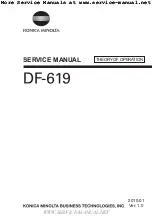
RespiraSense
™
Instructions For Use
RespiraSense
™
PDS-801-007 Revision 2
Page
5
of
77
Cautions
The RS Device is to be operated by qualified personnel only. This manual and all precautionary
information and specifications should be read before use.
The RS Device mobile medical software application does not record or centralise any clinical
information for the purpose of retaining patient records. Historical information is stored on the Lobe
for the purpose of reference; however, it is deleted when the Lobe is recharged.
Only use the RS Device in line with the instructions in this manual.
During application, operators must ensure that the RS Device alarm limits are set in accordance with
the clinical guidelines of the hospital.
The alarm signal of the RS Device reaches a nominal sound pressure level of 64 dB maximum at one
meter in front of monitor.
In cases of high or low respiratory rate readings, the clinical status of the patient should be assessed
by a healthcare professional and/or supplemented with additional physiological data.
Do not place the RS Device in any position that could cause it to fall on the patient.
Always remove the Lobe and Sensor from the patient and completely disconnect the RS Device from
the patient before bathing the patient.
Do not place the RS Device or any associated IT equipment where the controls or settings can be
changed by the patient unless required to e.g. self-care in community.
Do not place the RS Device on high powered electrical equipment as it could prevent the device
from working correctly.
Changes or modifications not expressly approved by the party responsible for compliance could void
the operator's authority to use the equipment.
Respiratory Rate is empirically calculated according to the displacement measurements the Sensor
detects in the chest and abdomen during breathing and other non-breathing movements (coughing,
sneezing, talking, motion). The accuracy of the RS Device is reduced during periods of excessive or
continuous motion by the patient.
Instruct patients to avoid heavy electrical equipment or other sources of electromagnetic
interference, such as electric blankets and heating pads while wearing the RespiraSense to ensure
the most accurate measurements. Equipment such as electric blankets and heating pads are
included as sources of interference.
Inaccurate respiratory rate measurements can be caused by:
-
Motion artefact
-
Electromagnetic radiation interference
-
Apnoea events
-
Misplacement
-
Use of device beyond working life
Setting the alarm limits to extreme values may render the alarm functionality useless.
In cases where the Alarm LED and/or Sounder have been disabled, system feedback will be reduced.
Examine Patient Information to determine expected system feedback.







































